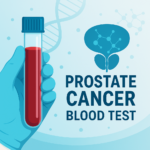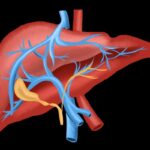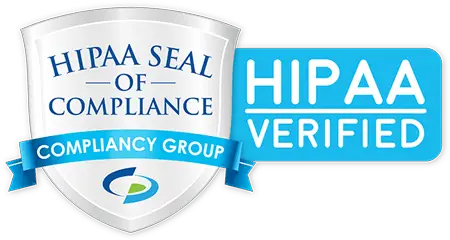Influence of alcohol use disorder on epigenetic age
“Alcohol Use Disorder: Forms and Consequences”
Alcohol use disorder, also known as alcohol dependence disorder, is a medical condition in which patients are unable to control or stop their alcohol consumption. This disorder can come in different forms, ranging from mild alcohol abuse to severe alcohol dependence. The more severe the dependence, the more severe the potential consequences for the patient. Alcohol use disorder, also known as alcohol dependence disorder, is a medical condition in which patients are unable to control or stop their alcohol consumption. This disorder can come in different forms, ranging from mild alcohol abuse to severe alcohol dependence. The latter is associated with higher alcohol tolerance, severe withdrawal symptoms and severe cravings for alcohol. The more severe alcohol dependence is, the more severe potential consequences for the patient are.
How dangerous is alcohol dependence disorder?
Currently, alcohol use disorder is one of the leading causes of premature death in the United States. According to the Centers for Disease Control and Prevention (CDC), in the period from 2015 to 2019, more than 140,000 people died from causes directly related to alcohol abuse or due to chronic illnesses caused by alcohol dependence. The leading causes among the latter are hepatitis, hypertension, cirrhosis, liver cancer, and stroke.
“The Negative Impact of Alcohol on the Liver and Brain”
Alcohol is known to have negative effects on various tissues of the body, particularly the liver and brain. The liver detoxifies the byproducts created during the breakdown of alcohol, and excessive alcohol use can lead to liver damage and the development of cirrhosis. In the brain, alcohol use can lead to a decrease in the volume of grey matter, which is crucial for nerve impulse transmission and supporting the nervous system. If enough damage is done to the prefrontal cortex, the affected individual may have difficulty with decision making, evaluating situations, and controlling movement.
Excessive alcohol use can also lead to liver damage and the development of conditions such as cirrhosis and liver cancer. These negative effects highlight the need for caution when consuming alcohol.
These findings highlight the negative impact of excessive alcohol use on the body.
The Destructive Effects of Alcohol on the Brain and Liver
Alcohol is known to affect various tissues in the body, particularly the liver and the brain. The liver is responsible for detoxifying the products created as a result of alcohol breakdown, and the brain is vulnerable to the effects of alcohol use. It is known that alcohol consumption can lead to a decrease in the volume of grey matter in the brain, which is the area that consists of nerve cells that transmit nerve impulses and support all of the reactions of the nervous system. If there is enough damage to the prefrontal cortex, a crucial area of the brain, the affected individual may have trouble with important functions such as decision making, evaluating situations, and controlling movement. These are all essential for everyday life and survival.
Additionally, alcohol can damage the liver and disrupt its normal functioning, leading to the development of cirrhosis and even liver cancer.
Alcohol Use and Its Impact on Epigenetic Aging
Alcohol dependence can run in families. There have been multiple attempts to identify the genes responsible for the inherited alcohol use disorder. However, no definite markers have been found, except for certain variants of the genes that code for alcohol dehydrogenase (ADH) and aldehyde dehydrogenase (ALDH). There is also evidence that excessive alcohol use can change the activity of genes in the human brain.
It is known that ethanol, a major component of alcoholic drinks, has a complex influence on aging. Low doses of ethanol may have a protective effect, while higher doses increase the risk of premature death and accelerate the appearance of markers of aging. A recent study in Italy has also shown that moderate amounts of alcohol can increase epigenetic aging in postmenopausal women. All of these facts suggest that excessive alcohol use may contribute to aging at a cellular and molecular level.
To evaluate how alcohol abuse affects epigenetic aging in various cell types, a group of researchers at the National Institute on Alcohol Abuse and Alcoholism in Bethesda, Maryland, are collaborating with several other universities and clinics in the USA to investigate different groups of samples to see how alcohol use influences epigenetic aging in the different cell types of the body.
Alcohol Dependence and Epigenetic Age Acceleration in Blood, Liver, and Brain Cells
The goal of the study was to understand how alcohol dependence influences the changes in three crucial types of cells: blood cells, liver cells, and brain cells. In order to investigate this, the researchers have investigated:
- Blood samples from the 59 volunteers diagnosed with alcohol use disorder
- Blood samples from 70 healthy volunteers
- 143 samples taken from volunteers in the Grady Trauma project. This particular study predominantly enlists African American individuals from a low socio-economic background and diagnosis of alcohol dependence disorder and alcohol abuse disorder. Some of the patients also had PTSD symptoms.
- 46 liver samples from patients with liver cirrhosis provided by University of Minnesota
- DNA methylation data from 26 liver samples taken from patients with liver cirrhosis provided by Mayo Clinic
- Postmortem samples of the prefrontal cortex of the brain taken from deceased patients with alcohol dependence disorder and alcohol abuse disorder as well as people without the alcohol – related diagnosis. Epigenetic age was calculated for all three types of cells. The researchers have discovered that the changes in epigenetic age depended on the type of the cells and particular symptoms of the investigated patients:
- Epigenetic age was accelerated (i.e. higher than chronological age) in the blood cells sample taken from individuals with alcohol use disorder, while such acceleration was not present in the volunteers
- Samples taken from people enlisted into Grady Trauma project were different. There were two groups in the analysis – one diagnosed with alcohol abuse, and the other without such diagnosis. Still, most participants also had symptoms of PTSD or lived in stressful/traumatic conditions, and so both those groups had epigenetic age acceleration, and there was no significant difference between the group diagnosed with alcohol abuse and control group. Also, patients participating the project could try to become sober, which can potentially reverse the epigenetic aging.
- Cirrhotic liver tissue was shown to have epigenetic age acceleration compared to the healthy liver cells. The researchers have noted that the data from the samples was obtained with different technology, and the differences in epigenetic age were less notable in one sample collection compared to the other. These findings mean that more extensive research should be done on the changes in the liver, with larger samples and more uniform methods.
- The analysis of the brain cells was also surprising. It is known that extensive intake of alcohol severely affects brain cells, and so epigenetic age acceleration would be expected for this cell type. Instead the epigenetic age in these cells was not accelerated and even was lower than chronological age. The researchers propose that many samples of brain tissue were taken from patients diagnosed with alcohol abuse disorder, not ALC. As alcohol abuse disorder is a milder condition associated with intake of less amounts of alcohol, it is possible that moderate amounts of alcohol can slow down aging process in the cell, as was mentioned earlier.
These results show that high amounts of alcohol do make our cells age faster. Still, this study was carried out on small number of individuals or samples, so there should be larger studies that can make the scientists see how excessive alcohol intake influences different types of cells in our bodies.
Literature
- Buddy, T. (April 25, 2020). The Difference Between Alcohol Abuse and Alcohol Dependence [Online]. Verywellmind. Available at: https://www.verywellmind.com/alcohol-abuse-vs-alcohol-dependence-63101/. Last assessed on February 8, 2021.
- Alcohol and public health: Alcohol-related diseases impact [online]. Centers for disease control and prevention. Available at: https://nccd.cdc.gov/DPH_ARDI/Default/Report.aspx?T=AAM&P=1A04A664-0244-42C1-91DE-316F3AF6B447&R=B885BD06-13DF-45CD-8DD8-AA6B178C4ECE&M=32B5FFE7-81D2-43C5-A892-9B9B3C4246C7&F=&D. Last assessed on February 8, 2021.
- Heikinnen, N. et al. [April 2017]. Alcohol consumption during adolescence is associated with reduced grey matter volumes. Addiction, 112(4), p.604-613.
- Joffe, M. E. [November 7, 2018]. Persistent “Sag” in Prefrontal Cortex Function following Adolescent Binge Drinking. The journal of neuroscience, 38(45), p. 9615-9617.
- Maher, J. J. [1997]. Exploring alcohol’s effects on liver function. Alcohol. Health. Res. World, 21(1), p. 5-12.
- Tawa, E.A., S. D. Hall and F. W. Lohoff [September 2016]. Overview of the Genetics of Alcohol Use Disorder. Alcohol Alcohol., 51(5), p. 507-14
- Quach, A. et al. [February, 2017]. Epigenetic clock analysis of diet, exercise, education, and lifestyle factors. Aging (Albany, NY), 9(2), p. 419-446.
- Grady Trauma project. [online]. Emory University School of Medicine. Available at: http://psychiatry.emory.edu/research/programs/ata/grady_trauma/index.html. Last accessed: February 8, 2021.
- Warden, A. S. and R. D. Mayfield [March, 2017]. Gene expression profiling in the alcoholic human brain. Neuropharmacology, 122, p. 161-174
- Philibert, R. A. et al. [September, 2014]. A pilot examination of the genome-wide DNA methylation signatures of subjects entering and exiting short-term alcohol dependence treatment programs. Epigenetics, 9(9), p. 1212-9.
Recent Blog Posts
-
 13 Jun 2025MTL Epitherapeutics and RI-MUHC Develop Early Prostate Cancer Blood Test
13 Jun 2025MTL Epitherapeutics and RI-MUHC Develop Early Prostate Cancer Blood Test -
 11 Jan 2025EpiAge Research Publication Signals a New Era in Understanding Biological Aging
11 Jan 2025EpiAge Research Publication Signals a New Era in Understanding Biological Aging -
 18 Nov 2024EpiMedtech Global Announces FDA Registration of EPIAGE, the First Epigenetic Age Test Registered by the FDA
18 Nov 2024EpiMedtech Global Announces FDA Registration of EPIAGE, the First Epigenetic Age Test Registered by the FDA -
 18 Nov 2024EpiMedTech Global Validates Unique epiCervix HPV Combo Test for Cervical Cancer Detection
18 Nov 2024EpiMedTech Global Validates Unique epiCervix HPV Combo Test for Cervical Cancer Detection -
 31 Oct 2024HKG epiTherapeutics’ MetaGen Genetic Risk Assessment Test Receives FDA Registration, Now Available in the U.S.
31 Oct 2024HKG epiTherapeutics’ MetaGen Genetic Risk Assessment Test Receives FDA Registration, Now Available in the U.S. -
 31 Oct 2024EpiMedTech Global Launches epiGeneComplete: A Breakthrough Genetic and Epigenetic Test for Comprehensive Health Diagnostics
31 Oct 2024EpiMedTech Global Launches epiGeneComplete: A Breakthrough Genetic and Epigenetic Test for Comprehensive Health Diagnostics -
 30 Oct 2024Enhanced Early Detection of Liver Cancer
30 Oct 2024Enhanced Early Detection of Liver Cancer -
 08 Oct 2024Are Microarrays Still Reliable? How Next-Generation Sequencing Outperforms Traditional Methods
08 Oct 2024Are Microarrays Still Reliable? How Next-Generation Sequencing Outperforms Traditional Methods



